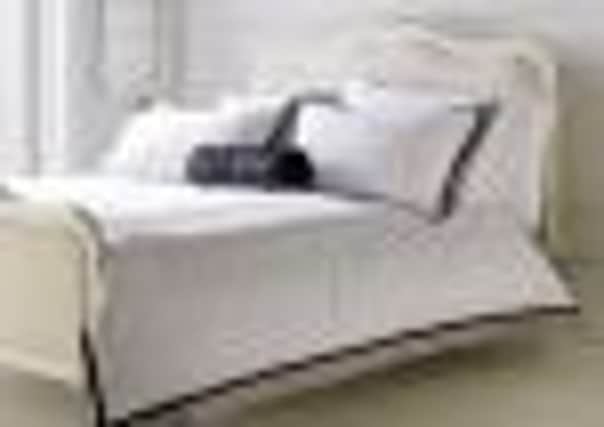Bedding down for the winter


Of course, the quality of your duvet and pillows make a vital contribution to the look and feel of your bed. However, it is primarily the bed linen that you choose which can make a significant difference to the quality of your sleep.
If you are in the process of considering new bedding, then there are a few basics that you need to understand to help you make an informed choice. Colour and design aside, the most important concern is that you purchase bedding in a fabric that best meets your needs.
Advertisement
Hide AdAdvertisement
Hide AdCotton is by far the best loved fabric for bedding; it reacts to your body allowing it to breath and ensuring that you are kept comfortable and never clammy. However, improvements in the manufacturing process and finishing techniques mean that other fabrics like polyester and viscose can be a viable alternative to cotton.
So how do you interpret the baffling amount of terms on packaging to ensure that you are getting the perfect fit for you?
Microfibre bedding is composed of extremely fine polyester fibres. This method of production makes for very affordable and soft bedding that will resist pilling more than traditional polyester fabric might. It can be a good alternative for beds that are used less frequently (such as in a guest room). However, the fact that it is less breathable than cotton means it is unlikely to be ideal for anyone with sensitive skin.
A recent discovery for me has been Cotton Jersey bedding, which is both reasonably priced and extremely breathable as it is knitted, rather than woven. When you touch it you realise that jersey is essentially T-shirt fabric, so is incredibly comforting – one guest described it as like “sleeping in clouds”. You can find a good range in soft, muted colours at Marks & Spencer from £9.50.
Advertisement
Hide AdAdvertisement
Hide AdMan-made fabrics usually help to reduce maintenance (with some specifically designed to minimise ironing). However, if you enjoy sliding into crisp, cool sheets then cotton really is your only option (or at the very least a cotton-polyester mix with a minimum of 80 per cent cotton).
The highest quality and softest sheets are woven using extra long fibres, which are spun into fine, strong yarns. This is a mark of the highest quality and certified long fibre cottons include Egyptian, pima and Supima (a registered trade make to look out for). Obviously, this all comes at a price and standard fibre cottons can still be extremely comfortable.
You should definitely check the thread-count of your cotton, as this is one of the main determining factors. This is literally the number of threads per square inch: essentially the higher the count, the softer the sheet. The combination of a high volume of thin thread means that you achieve a soft, silky feel that will actually be enhanced after washing a number of times.
Good sheets range from about 200 to 800 thread-count; I would ideally opt for something in a 300 to 500 thread-count. The Designers at Debenhams range feature a number of plains at 500 thread count which is really amazing (and irons incredibly easily) – from £26.
Advertisement
Hide AdAdvertisement
Hide AdYou will see higher counts, but there is a diminishing return and it can be difficult to really tell the difference between a 500 and 1,000 count product.
However, just because a sheet has a lower thread count does not necessary mean it is low quality, as the weave and manufacturing processes also make a difference.
While they are unlikely to figure highly in your decision making process, it can be useful to understand what these production terms mean if they appear on the label.
Sateen is a cotton cloth made with a satin weave. This gives a soft feel with a shinier finish, but can be less durable than a tighter weave.
Advertisement
Hide AdAdvertisement
Hide AdPercale is a crisp and durable plain weave fabric: it should have a thread count of at least 180.
Combed Cotton has been combed to remove the short fibres and leave the long ones resulting in a soft, but strong fabric.
One of the most important tests still has to be the common sense approach of physically touching the product. Ultimately, you are looking for something that feels soft to the touch and gives you a feeling of personal luxury.
Whatever choice you make, remember that if you do not purchase a quality product you will end up paying a higher price in the long run. Cheap bedding really is a false economy. Not only is a quality product likely to last longer, but it will also be more comfortable and a good night’s rest is really something that you cannot put a price on.
Jamie Hempsall, BIID, is an award-winning interior designer. www.jamiehempsall.com or 0800 032 1180.